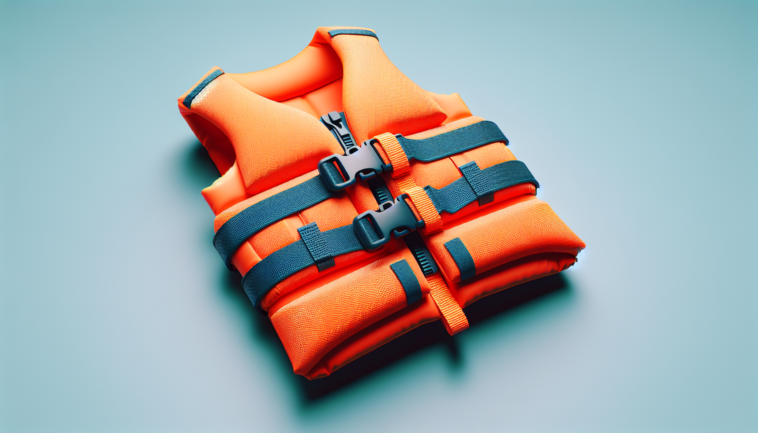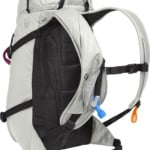Imagine enjoying a peaceful day out on the water, with the wind in your hair and the waves beneath your boat. Now picture sharing that experience with your furry friend. But before you set sail, it’s essential to familiarize yourself with the regulations and safety considerations for boating with pets on board. From life jackets to pet-friendly marinas, this article will provide you with the knowledge and tips you need to ensure a safe and enjoyable boating adventure for both you and your beloved companion.
Required Safety Equipment
Life Vest for Pets
When bringing your pet on board a boat, it is essential to have a life vest specifically designed for them. Just like humans, pets can run into unexpected situations while out on the water, and a life vest can help keep them safe if they end up in the water. Make sure the life vest fits your pet properly and is comfortable for them to wear throughout the boating trip.
Leash or Harness
Having a leash or harness for your pet is crucial to ensure their safety on the boat. It is essential to keep your pet securely tethered to the boat to prevent them from jumping or falling overboard. Additionally, a leash or harness can help you maintain control over your pet’s movements and behavior while on board.
First Aid Kit for Pets
Just as you would have a first aid kit for yourself, it is equally important to have one specifically for your pet. Accidents can happen anywhere, including on a boat. A pet-friendly first aid kit should include essentials such as bandages, antiseptic solutions, tweezers for splinter removal, and any medications that your pet may need. Having a well-stocked first aid kit ensures that you are prepared to handle any minor injuries or health issues that may arise during your boating trip.
Pre-Boating Preparations
Acclimating Your Pet to the Boat
Before setting sail, it is vital to acclimate your pet to the boat environment. Introduce them to the boat gradually, allowing them to explore and get familiar with their surroundings. Start by taking your pet on short trips and gradually increase the duration as they get more comfortable. This gradual introduction will help alleviate any anxiety or stress your pet may feel on the boat and make the experience more enjoyable for both you and your furry friend.
Pet Identification and Microchipping
When heading out on a boating adventure with your pet, it is crucial to ensure they are properly identified. Make sure your pet is wearing a collar with an ID tag that includes their name and your contact information. Additionally, consider getting your pet microchipped, as this provides an added layer of identification in case they get lost or separated from you while on the boat. Microchipping is a simple and painless procedure that can greatly increase the chances of reuniting with your pet if they go missing.
Pet-Friendly Boating Locations
Not all bodies of water or boating areas are pet-friendly, so it is essential to research and choose boating locations that permit pets on board. Some places may have restrictions or regulations regarding pets, so familiarize yourself with any rules or guidelines before planning your boating trip. Look for designated pet-friendly areas or marinas that welcome pets, as this ensures a more enjoyable and stress-free experience for both you and your furry companion.
Temperature and Weather Considerations
Heatstroke Prevention
Boating under the scorching sun can put your pet at risk of heatstroke, so it is vital to take necessary precautions to prevent this potentially life-threatening condition. Keep your pet well-hydrated by providing ample fresh water and ensuring they have access to shade on the boat. Avoid peak sun hours when the temperature is at its highest, and consider using pet-friendly sunscreen on exposed areas such as noses or bellies. If your pet shows signs of heat exhaustion, such as excessive panting or lethargy, immediately remove them from the sun, offer water, and seek veterinary attention if necessary.
Cold Weather Safety
Just as heat can be dangerous, cold weather also poses risks to your pet’s well-being on a boat. Take into account the temperature and adjust accordingly to keep your pet comfortable. Provide them with warm blankets or clothing to protect them from the cold, and ensure they have a cozy, sheltered spot on the boat to retreat to. It is essential to monitor your pet closely for signs of hypothermia, such as shivering, weakness, or pale gums, and take prompt action to warm them up if needed.
Proper Hydration and Nutrition
Fresh Water Supply
Proper hydration is essential for your pet’s health and well-being while on a boat. Make sure to bring enough fresh water for your pet, as they can become dehydrated more quickly while in the sun and engaging in physical activity. Have a designated water bowl that is easily accessible to your pet, and frequently offer them water throughout the boating trip. It is also a good idea to bring along a portable water filter in case you need to refill your pet’s water supply from a natural water source.
Pet Food Storage and Feeding
When it comes to feeding your pet on a boat, it is best to stick to their regular feeding routine as much as possible. Store their food in a secure container to prevent it from getting wet or contaminated. Consider using specially designed pet food bowls that attach to the boat to prevent spills. Avoid giving your pet excessive treats or unfamiliar food while on the boat, as this can lead to digestive upsets. If you plan on being away from shore for an extended period, pack enough food to last the duration of the trip.
Pet Bathroom Needs
Toileting Training
Before taking your pet on a boating excursion, it is important to ensure they are properly trained in toileting behaviors. Teach your pet to eliminate on command, as this will be helpful for when nature calls while on the boat. Establish a designated potty area on the boat, such as a litter box for cats or a special spot with pee pads for dogs. Use positive reinforcement techniques and reward your pet for using the designated area to reinforce the desired behavior.
Proper Waste Disposal
When it comes to Proper waste disposal, it is crucial to follow environmental guidelines and regulations. Never dispose of pet waste in the water, as it can contaminate the surrounding environment and pose a risk to other boaters or marine life. Bring along biodegradable waste bags to collect your pet’s waste and dispose of it in designated receptacles on land. It is important to be a responsible pet owner and ensure the cleanliness and preservation of the boating area for everyone to enjoy.
Pet Behavior and Training
Training for On-Board Behavior
Proper training and behavior management are vital to ensure a safe and enjoyable boating experience for both you and your pet. Teach your pet basic obedience commands such as “sit,” “stay,” and “come” to maintain control and prevent any unwanted behavior on the boat. Additionally, consider desensitizing your pet to common boating noises and movements to prevent anxiety or fear responses. Positive reinforcement techniques, such as treats or praise, can be highly effective in encouraging desired behaviors and creating a positive association with boating.
Positive Reinforcement Techniques
Positive reinforcement is a powerful tool when it comes to training and influencing your pet’s behavior on the boat. Use rewards such as treats, praise, or playtime to reinforce desired behaviors, such as staying calm or remaining in designated areas. Avoid punishment or harsh training methods, as these can lead to fear or avoidance behaviors. By focusing on positive reinforcement techniques, you can build a strong bond with your pet and create a positive boating experience for both of you.
Pet Comfort and Rest Areas
Comfortable Sleeping Arrangements
Providing your pet with a comfortable sleeping area on the boat is essential for their overall well-being and relaxation. Set up a cozy spot for your pet, such as a cushion, bed, or blanket, in a quiet and secure location on the boat. Consider using non-slip mats or rugs to prevent any accidental slips or falls. Ensure that the sleeping area is well-ventilated, and provide your pet with any necessary comfort items such as their favorite toys or blankets to help them feel more at ease.
Sun Protection and Shade
Protecting your pet from the sun’s harmful rays is crucial, as prolonged exposure can lead to sunburn and other skin issues. Provide ample shade on the boat to allow your pet to escape the direct sunlight when needed. Utilize umbrellas, canopies, or designated shade areas to create a comfortable refuge for your pet. Additionally, consider using pet-friendly sunscreens on exposed areas, especially for pets with lighter fur or exposed skin. By taking these measures, you can ensure your pet’s comfort and prevent any potential sun-related complications.
Rescue and Emergency Protocols
Emergency Contact Information
Having emergency contact information readily available is crucial in case any unforeseen events or emergencies occur while boating with your pet. Make sure to carry a list of important phone numbers, such as your veterinarian’s contact information, as well as local emergency services or animal hospitals. Additionally, it is advisable to inform a trusted friend or family member about your boating plans and provide them with your contact information. Should an emergency arise, having these resources readily available can help ensure a swift response to any critical situations.
Pet CPR and First Aid Training
Being prepared for pet emergencies is essential when boating with your furry friend. Consider learning basic pet CPR and first aid techniques to be able to respond effectively in case of an emergency. Online resources, books, or local pet organizations often offer pet first aid courses or workshops. Familiarize yourself with common pet emergencies such as choking or injury, and learn how to administer prompt and proper care. By acquiring these skills, you can be better equipped to handle any unforeseen emergencies while out on the water.
Legal Requirements and Restrictions
Pet Transportation Regulations
Before setting sail, it is crucial to familiarize yourself with the legal requirements and regulations regarding pet transportation. Different jurisdictions may have specific guidelines, so be sure to research and comply with any relevant laws. Some areas may require pets to be on a leash or have certain vaccination records. By adhering to these regulations, you can ensure a hassle-free and compliant boating experience.
Leash Laws, Licensing, and Vaccinations
Along with pet transportation regulations, it is essential to be aware of leash laws, licensing, and vaccination requirements. Ensure that your pet has a current license or identification tag as required by local laws. Keep up-to-date vaccination records for your pet, as some boating locations may require proof of vaccination. Additionally, always comply with leash laws, both on land and while on the boat, to prevent any potential conflicts or accidents with other boaters or wildlife.
Dealing with Seasickness and Anxiety
Prevention and Treatment
Just like humans, pets can also experience seasickness while on a boat. To prevent this discomfort, avoid feeding your pet a large meal before boating and provide them with plenty of fresh air. You can also discuss with your veterinarian the possibility of using seasickness medications specifically formulated for pets. If your pet does experience seasickness, keep them calm and offer them small amounts of water. Once back on land, allow your pet to rest and recover in a quiet, familiar environment.
Creating a Calming Environment
For pets prone to anxiety or stress, creating a calming environment on the boat is essential. Consider using familiar bedding or blankets that carry familiar scents to help your pet feel more secure. Play soft, soothing music to help mask any loud noises that may cause anxiety. Utilize calming products such as pheromone diffusers or sprays, which can help reduce stress and anxiety in pets. By creating a peaceful and relaxing atmosphere, you can help ensure your pet’s comfort and enjoyment during your boating adventure.
With the right safety equipment, preparations, and considerations in place, boating with your pet can be a fun and enjoyable experience. Prioritize your pet’s safety and well-being by following these guidelines, and always be mindful of their needs during the boating trip. By taking the necessary precautions and providing a comfortable and secure environment, you and your furry friend can create lasting memories on the open water.





